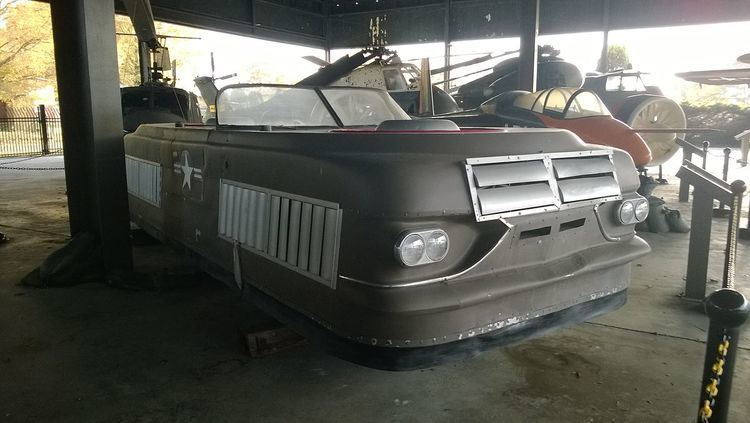 | ||
A hover car is a personal vehicle that flies at a constant altitude of up to few meters (some feet) above the ground and used for personal transportation in the same way a modern automobile is employed. It usually appears in works of science fiction.
Contents
- Real world efforts to build hover cars
- In science fiction films and television
- In video games
- References
In science fiction, it is usually capable of elevating itself some distance from the ground through some repulsion technology, presumably exploiting some short range anti-gravity principle so as to eliminate most friction forces which act against conventional vehicles. The capability of hovering above the ground eliminates the need for tires, and unlike an air-cushion vehicle, it does not produce a dust cloud.
The closest real-world devices are the hovercraft, which elevates itself above a water or level hard surface using a cushion of air retained by a flexible skirt, and the hovertrain, which is a type of high-speed train that replaces conventional steel wheels with hovercraft lift pads, and the conventional railway bed with a paved road-like surface, known as the "track" or "guideway"
Real-world efforts to build hover cars
In April 1958, Ford engineers demonstrated the Glide-air, a three-foot (one-metre) model of a wheelless vehicle that speeds on a thin film of air only 3⁄1000 of an inch (76.2 µm) above its table top roadbed. An article in Modern Mechanix quoted Andrew A. Kucher, Ford’s vice president in charge of Engineering and Research noting "We look upon Glide-air as a new form of high-speed land transportation, probably in the field of rail surface travel, for fast trips of distances of up to about 1,000 miles (1,600 km)".
In 1959, Ford displayed the concept car Leva car. It was a one-person, small in a modern sense, car propelled by maglev. The car was designed to be levitated by magnets, and was intended to be developed for high-speed transportation systems. The Levicar was very light and when raised off its guide rail by the magnetic it only required a blower in the back to propel it. A working model was actually built. While technically a success, the whole project was dropped due to financial constraints.
In August 1961, Popular Science reported on the Aeromobile 35B, an air-cushion vehicle (ACV) that was invented by William Bertelsen and was envisioned to revolutionise the transportation system, with personal hovering self-driving cars that could speed up to 1,500 mph (2,400 km/h).
